A bicycle without brakes is a direct path to an accident. Only a few models of bicycles for extreme, cycle freestyle are not equipped with brakes, or bikers who want to risk their life for the sake of adrenaline will independently remove the default bicycle brakes. But a calm and fast ride without them is impossible.
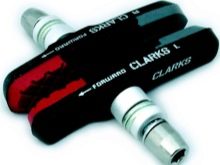
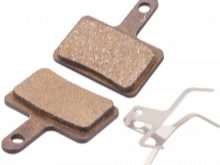
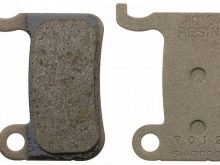
Types
The bicycle industry offers the following types of brakes: V-brake, drum and disc. The first ones are cheap, with little resources, the second ones are a compromise option, the third ones are the most “long-playing” ones, but they are also expensive.
V-brake
V-brakes - The simplest design in the form of the letter V, driven by a cable. The rim itself acts as a brake disc without any additional layer or other basis. The levers of such a brake are extremely simple - they resemble the closing parts of a spring-loaded bracket. As with all brakes, the pushing force from the brake handle on the steering wheel is transmitted using a cable enclosed in a “shirt” - a waterproof plastic tube that prevents scratching and premature rusting of steel threads.
The rim brake pads here are screwed onto the caliper elements using bolts with nuts and lock washers. It is important not to confuse the left and right - the pads are curved in the shape of the rim, and do not stand straight, like bars, which makes it possible to brake faster and more efficiently. The midline of the pad coincides with the midline of the rim.
In this case, the rim itself has a corrugated, "pockmarked" surface, and this "ripple" is parallel to its outer circumference, which allows the shoe to rub in more quickly and "wedge" into it during braking, creating an extremely large contact area of rubbing surfaces.The size of the rim does not matter much - the effectiveness of the rim brakes with different wheel diameters does not vary significantly.
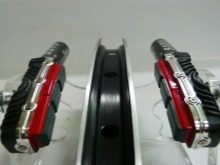

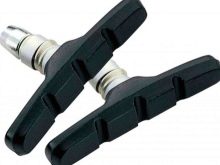
The V-brake block, although it has a steel base, has a polymer layer on the side of the braking surface - most often plastic or composite. Although V-brake manages to stop almost instantly, this layer wears out quickly due to the high angular velocity of the rim. It is many times larger than the braking surfaces of other types of brakes, in which the friction layers are much closer to the center of the wheel (hub). Only the pads themselves are interchangeable, then the cables are located next to the frequency of changeability.
The brake V-bracket can not be changed for several years - it is considered the most durable part, as are the handles on the steering wheel. However, continuing to ride with pads worn down to steel, you scrape aluminum layer by layer, which the rim consists of, and in the end it will bend substantially at full speed if it does not break. The latter is already life threatening. For the highest level of safety, the rim brakes are fully equipped - front and rear.
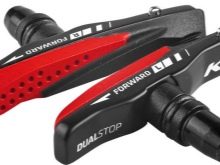
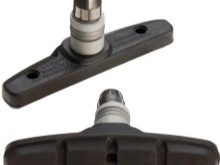
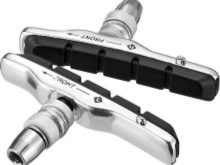
Disk
The basis for braking in disc brakes is a disc several times smaller in diameter than the wheel rim. The disk is fixed on the knitting needles with the help of special fasteners on a bolt base with brackets tightly covering the spoke. Installing it is much more complicated than brake brackets for V-brake. Disc brakes are placed mainly on bikes of the high and middle price segment. For example, they found their application on most highway tracks, where due to the speed of 40 or more kilometers per hour, the use of V-brake is not justified. Those, in turn, would quickly overheat and wear out when you need to slow down sharply when descending from a slight slope along the highway or near a dangerous turn.
The brake rotor (round disk in the plane of rotation of the wheel) requires at least 6 fulcrum for mounting. The mechanism adapter allows you to fix the brake caliper on the frame. The latter, in turn, engages the pads when pressing the brake levers on the steering wheel. Pads, finally, are directly involved in braking the bike. Instead of cables, disc brakes also use a hydraulic system - tubes with a fluid, like the one used on cars.
Hydraulics raise the cost by at least twice, but the handling feels finer and more distinct, which allows the biker to ride on more difficult and unpredictable roads.
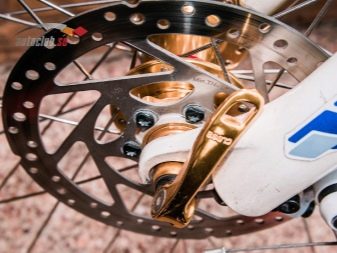
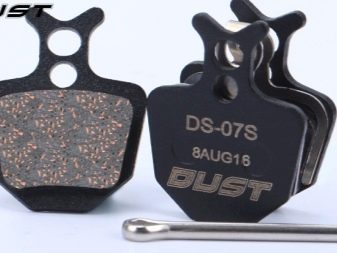
Drum
The drum brake is a classic of the bicycle industry. It was with him that the development of the brake system began. The sleeve housing is a drum in which the pads are part of a conventional sleeve-bearing mechanism. When the cyclist scrolls the pedals in the opposite direction, the pads are pressed more tightly to the inner surface of the sleeve, due to which the bike brakes.
They are durable and do not require replacement for years - rather, the ball bearings themselves and other spare parts will fail, than the pads themselves, since from a teaspoon to two tablespoons of lithol or solid oil, which serves as a lubricant, is stuffed into the sleeve. It removes the friction of dry before this pads by 98%. All parts, including pads, are steel, which also ensures their durability.. No aluminum, composite, plastic and rubber, as in other types of brakes.
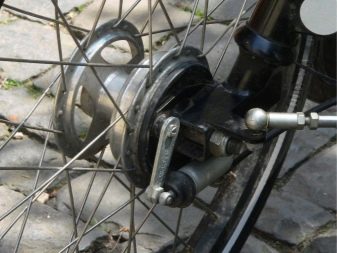
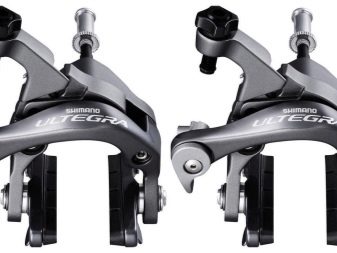
Materials of manufacture
The basis of the brake pads of disc or V-shaped brakes is steel or aluminum alloy. The disk rotor of the wheel is most often made on this basis. But the pads themselves can use ceramics, pressed and sintered aluminum powder, plastic, rubber or a high-strength compound as a working layer.
Pressed baked metal powder brake pads are the most “long-playing”. Their scope is disc brake. The disadvantage is less effective braking (greater braking distance). But that’s why they are valuable on racing bikes.The fact is that too fast braking at a speed of 30-40 km / h is fraught with throwing a cyclist out of the saddle. This is where the braking distance is needed up to hundreds (and not a dozen or two) meters, and the tire, after several sharp braking, rips off to the cord. But when descending from a hill, too long braking is undesirable - you can not slow down at all, crash into any obstacle at the first turn or bumps without fitting into a sharp turn.
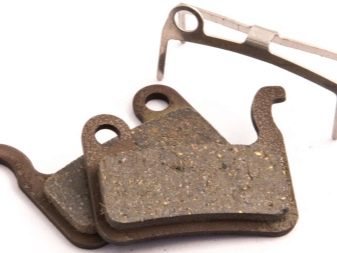
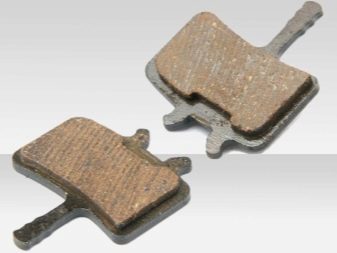
Ceramic pads are also not very "responsive." With strong compression during sudden braking, they are easy to break. Then the brake will completely fail, which is also dangerous.
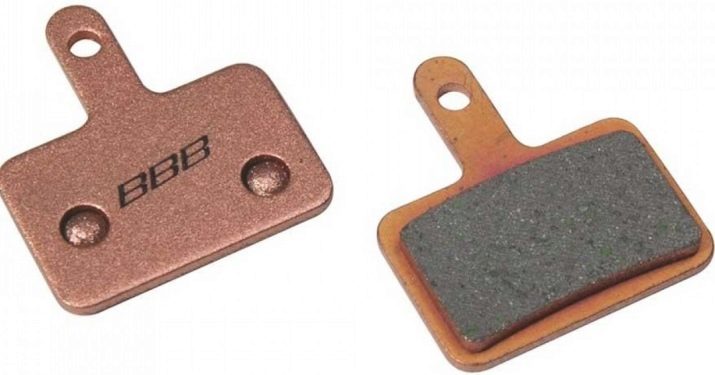
Composite is slightly better than ceramics, for example, the same plastic. When overheating, for example, during a long descent on a sloping road, plastic is bored extremely quickly. Such brakes are more effective than metal and ceramic.
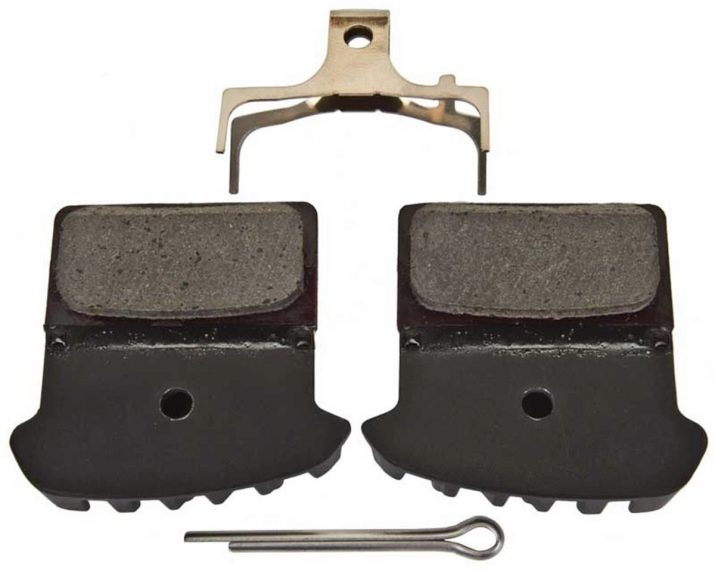
Rubber (Resin PAD) - the most effective, but also the least wear-resistant brakes. A few hundred meters of braking distance from a steep hill completely “kill” them. They provide the strongest adhesion to the rim or disk, but for the time being: after rubbing rubber to the metal, plastic or composite of which the bearing part consists, they become as ineffective as metal / ceramic ones, however, they begin to abrade the rim either disk.
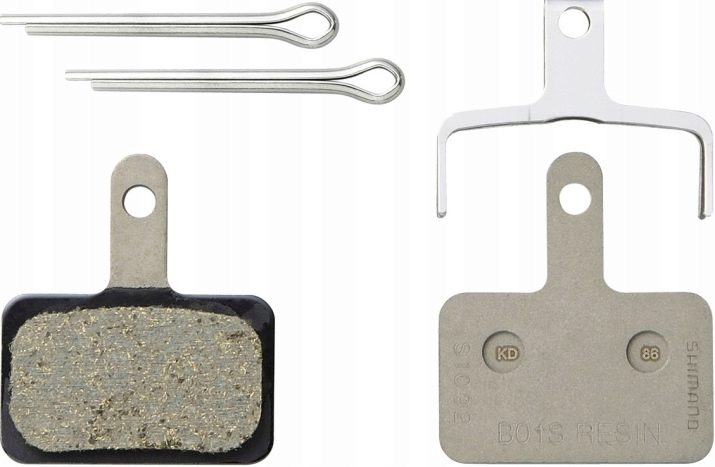
Semimetal models - a hybrid of composite and metal. Metal powder (in the ratio, for example, 1: 1, 1: 1,5) is mixed with a particularly strong compound. Braking performance is average.
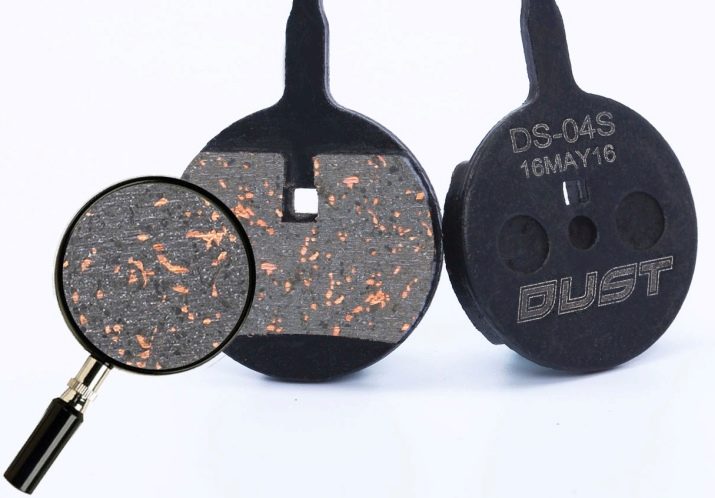
remember, that the harder and stronger the material of the pads, the longer it will last, but the less effective it will brake and creak louder.
Brands
The recognized giants of the bicycle industry over the past 10-20 years are considered American company Sram and Japanese company Shimano. Chinese and Taiwanese manufacturers (e.g. Artek), of which dozens, also seek to improve the quality of their products to at least the Japanese level, and not unsuccessfully. Some frugal consumers cheerfully report a very good resource of brakes for not too extreme riding, for example, on a walk or with long bike trips, bike trips.
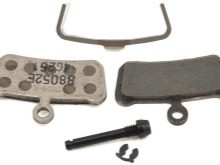

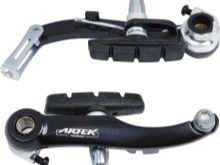
With a simple Shimano V-brake installed on a cheap mountain bike for 10-20 thousand rubles, you can easily drive 1000-2000 kilometers along the tracks (and while traveling in cities along the way), and still change your worn out pads to new ones.
You can guess about their wear both by a sharply reduced braking effect, and by the loss of smoothness of contact. Perhaps the "rubber" creak will change to a metal clang.
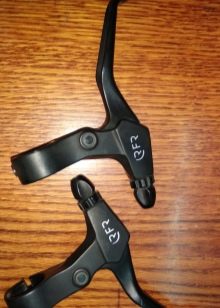
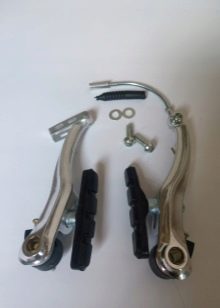

Whatever brake you choose and no matter how long it lasts, do not save on security. The brakes were invented not so much by cowards as by those who would not want people to lose health, or even life, because of their absence. As soon as braking has deteriorated significantly due to wear of rubbing surfaces, change both the pads and the rims themselves (discs, drum bushings).

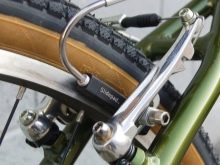

Next, watch a video on how to replace or install brake pads on bicycle disc brakes.










